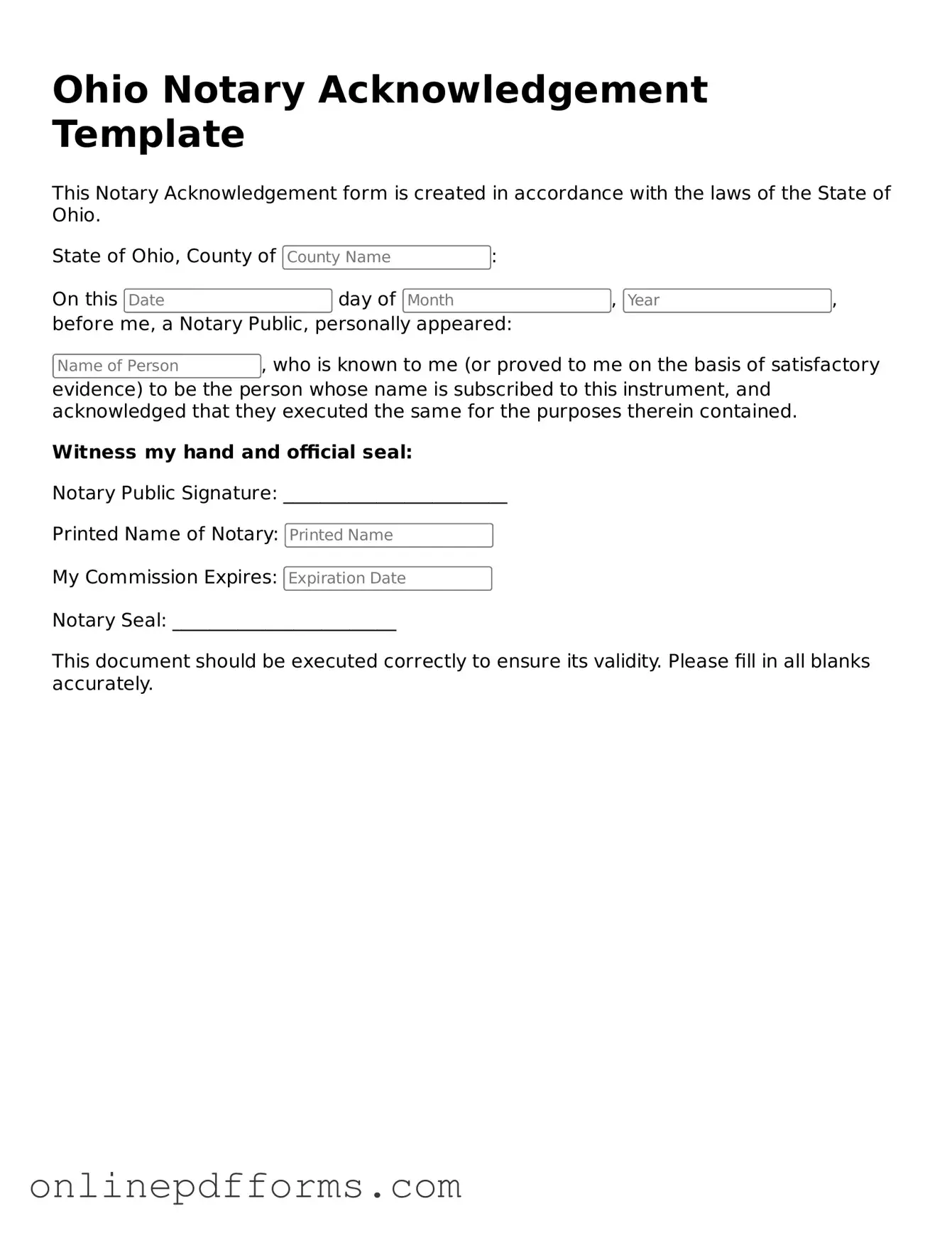Blank Ohio Notary Acknowledgement Form
The Ohio Notary Acknowledgement form is a legal document used to verify the identity of individuals signing a document, ensuring that the signatures are authentic and voluntary. This form serves as a crucial step in many legal transactions, providing a layer of protection against fraud. To ensure proper execution of your documents, consider filling out the form by clicking the button below.
Open Notary Acknowledgement Editor Now
